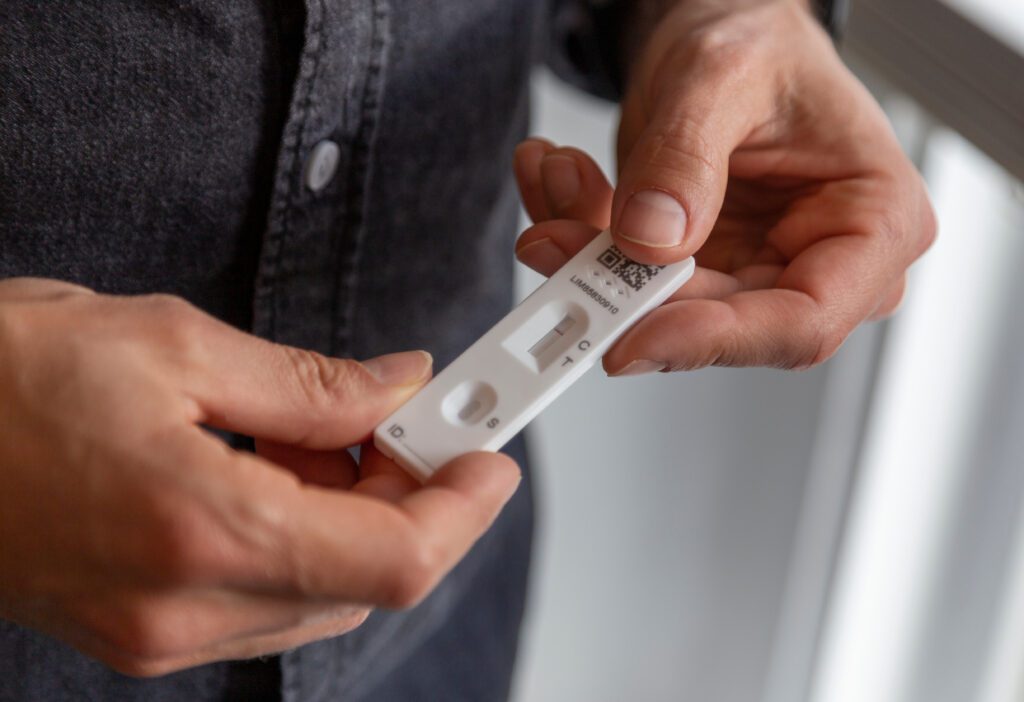
Please note: The rules on ending self-isolation have changed since this blog was published. Read updated information here.
This blog has been updated following clarification from the CDC on isolation guidance.
With COVID-19 cases reaching record levels across the UK, there is an increasing strain on key services, including the NHS.
It is important that we continually review the evidence to ensure we are balancing steps to limit the spread of the virus with the need to ensure that these services can continue.
We recently advised that it is possible to reduce the self-isolation period for those with a confirmed diagnosis of COVID-19 from 10 days to 7, following two negative lateral flow tests taken on day 6 and day 7 after symptoms start (or, in the case of those who do not have any symptoms, from the date of their first positive test). This advice is based on the latest data on how long people remain infectious, and modelling of different self-isolation options.
Those who leave self-isolation on or after day 7 are strongly advised to limit close contact with other people in crowded or poorly ventilated spaces, to work from home where possible and to minimise contact with anyone who is at higher risk of severe illness if infected with COVID- 19 for the next few days, to further reduce any remaining risk of spreading the virus.
There is no change to the guidance for unvaccinated contacts of people with COVID-19 who are still required to self-isolate for 10 full days after their date of exposure to someone who has tested positive for COVID-19.
Our modelling suggests that a 7-day self-isolation period, when combined with 2 consecutive negative LFD tests starting on day 6 and taken 24 hours apart, has nearly the same effect as a 10-day self-isolation period without LFD testing.
After 10 days self-isolation, 5% of people will still be infectious. Ending self-isolation after 7 days and two negative LFD tests results in a similar level of protection. The two negative test results are critical to safely supporting the end of self-isolation: if self-isolation ended on day 7 without testing, modelling suggests that 16% of people would still be infectious.
This revised guidance supports essential public services and supply chains over the winter, while still limiting the spread of the virus. The new policy means that most people with COVID-19 will not have to self-isolate for as long a period.
There have been calls for us to also shorten our self-isolation window in line with the United States guidelines of 5 days.
In the UK our advice is to self-isolate for at least 6 full days from the point at which you have symptoms or get a positive test, whichever is first. If you have two negative LFD test results on days 6 and 7, you can leave self-isolation on day 7.
In the United States, the advice is to isolate for at least 5 full days from the same point.
Our modelling suggests that 10-30% of people will potentially still remain infectious on day 6, if no re-assurance tests are performed at this point. The CDC also recognises that this length of isolation may not be sufficient on its own, and they advise, amongst other measures, the wearing of face masks as a mitigation for a further 5 days after this initial isolation period. They also recommend that anyone with symptoms should self-isolate for 10 full days unless those symptoms are improving by the end of day 5. They have also recently (4 January) updated their advice to recommend people take a test where possible before leaving isolation after 5 days.
Therefore, our current assessment is that shortening the isolation period further beyond the current 6 full days (including end of isolation assurance testing) would increase the risk of releasing individuals who could still be infectious. In some settings, where people in work in very close proximity, it may worsen staff shortages if it led to more people being infected
We will of course keep this position under review as evidence accumulates and as the government monitors workforce impacts of the isolation policy in critical sectors. In particular, our assessment may change as we continue to learn more about the features of the Omicron variant compared to, for example, the Delta variant.
We believe that allowing people to leave self-isolation after two negative lateral flow tests on days 6 and 7 is the optimal approach at present. This supports people who are unlikely to be infectious to go back to work and resume other activities, but continues to protect the wider population from infection.
